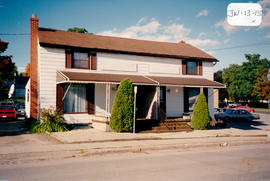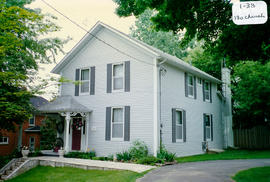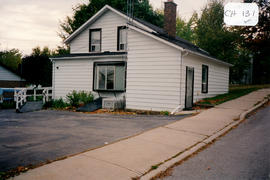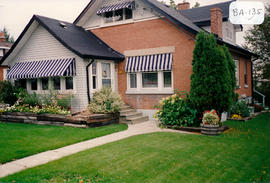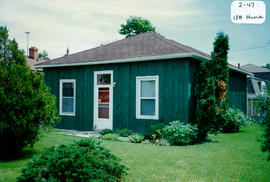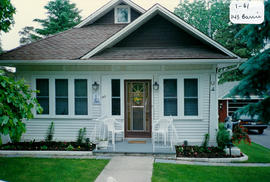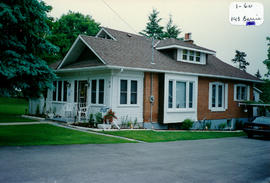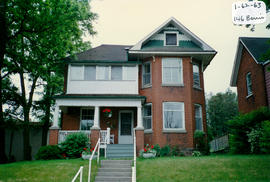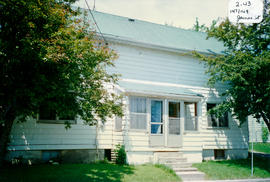- CA BWGPL GJ-HB-2017-04-05-08
- Item
- 1995
Part of George Jackson fonds
The mid-block duplex located at 13 and 15 John St. West was built pre-1900 in the Neoclassical Duplex style. During the 1920’s, the building was moved back from the street and onto new concrete foundations that were built by Leonard Saint. The building was a rental property that was possibly owned by Jim Webb at one time.
The 1½-storey, rectilinear building has a shallow, gable roof and paired entrances at the centre of the building. Window and door openings are not original and they have been significantly altered. The chimneys and shutters are also not original. Bevelled, vinyl siding conceals alterations to the structure beneath. Originally, the cladding may have been wood cove siding over the wood frame construction. According to the 2000 inventory, apart from the building’s form, little of the original building remains (including the parged-stone foundation). Additions and alterations, such as the front metal awning, entrance doors with side panels, and the windows are unsympathetic with the original character of the building. (1, 2, 3)
George Jackson

